
How to Use MH-MINI-360 VoltReg: Examples, Pinouts, and Specs
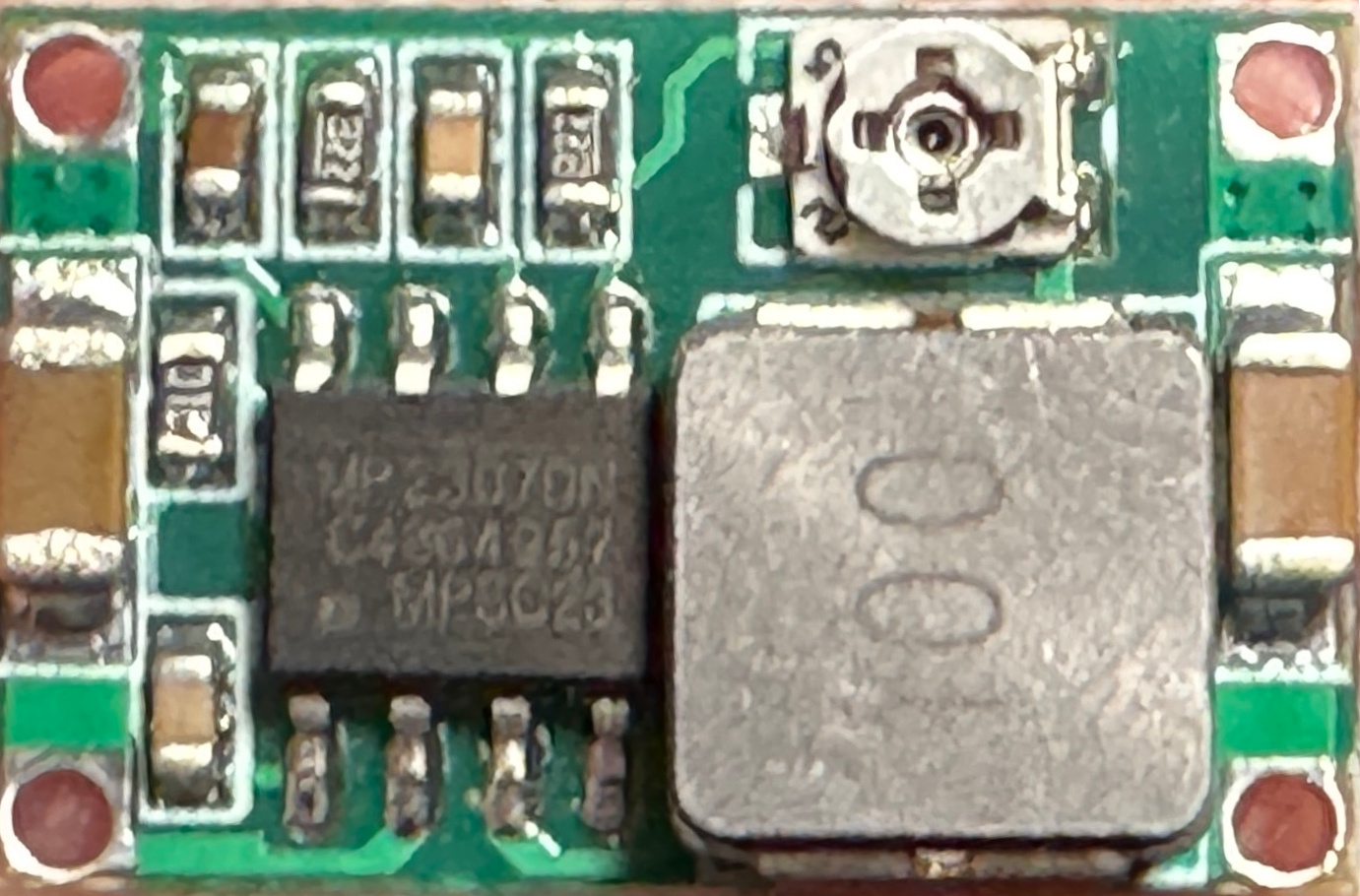
 Design with MH-MINI-360 VoltReg in Cirkit Designer
Design with MH-MINI-360 VoltReg in Cirkit DesignerIntroduction
The MH-MINI-360 VoltReg is a compact, efficient, and reliable step-down voltage regulator designed to provide a stable output voltage. It is widely used in low-power applications to ensure consistent performance, even when the input voltage fluctuates. Its small size and high efficiency make it ideal for portable devices, battery-powered systems, and embedded electronics.
Explore Projects Built with MH-MINI-360 VoltReg
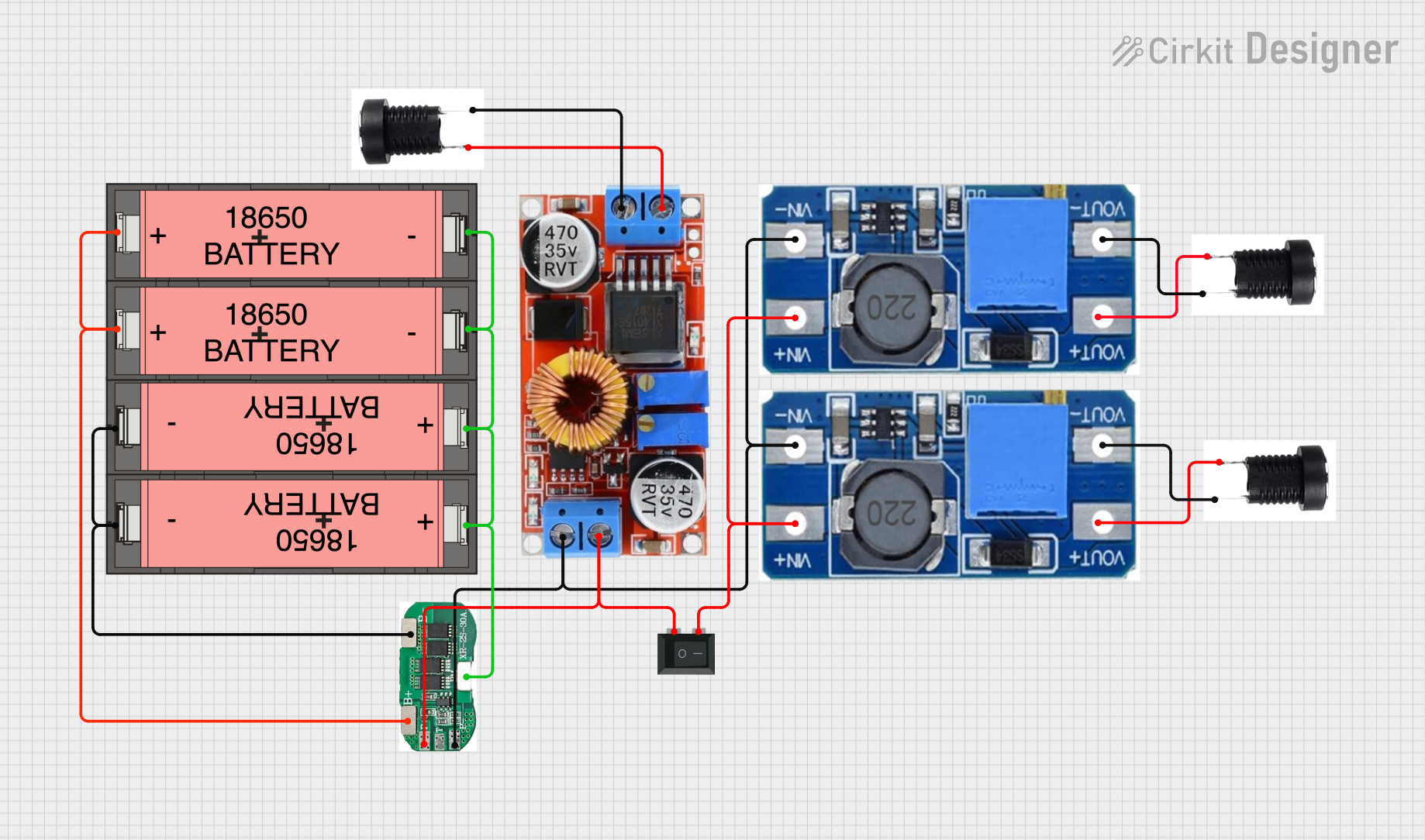
 Open Project in Cirkit Designer
Open Project in Cirkit Designer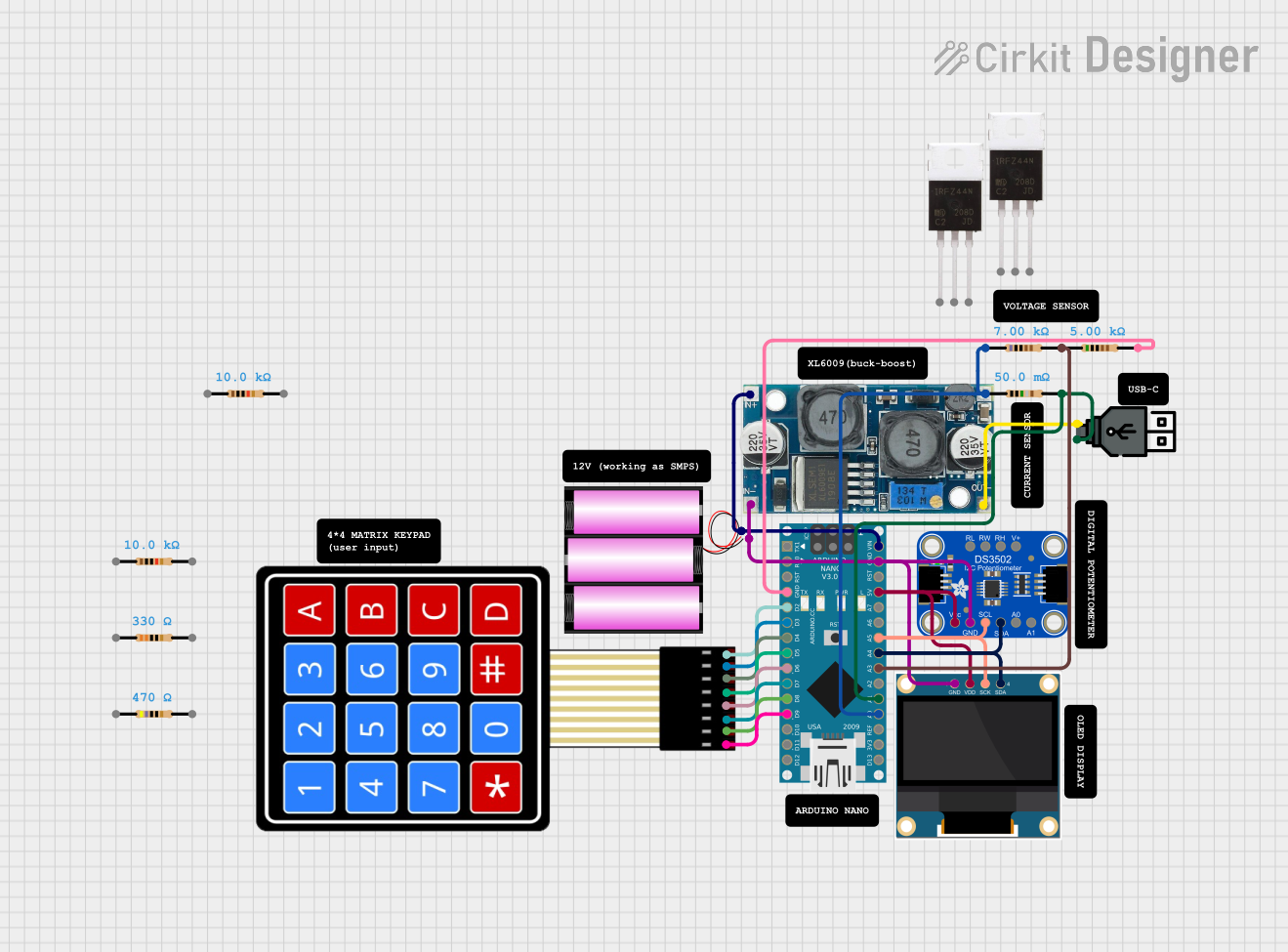
 Open Project in Cirkit Designer
Open Project in Cirkit Designer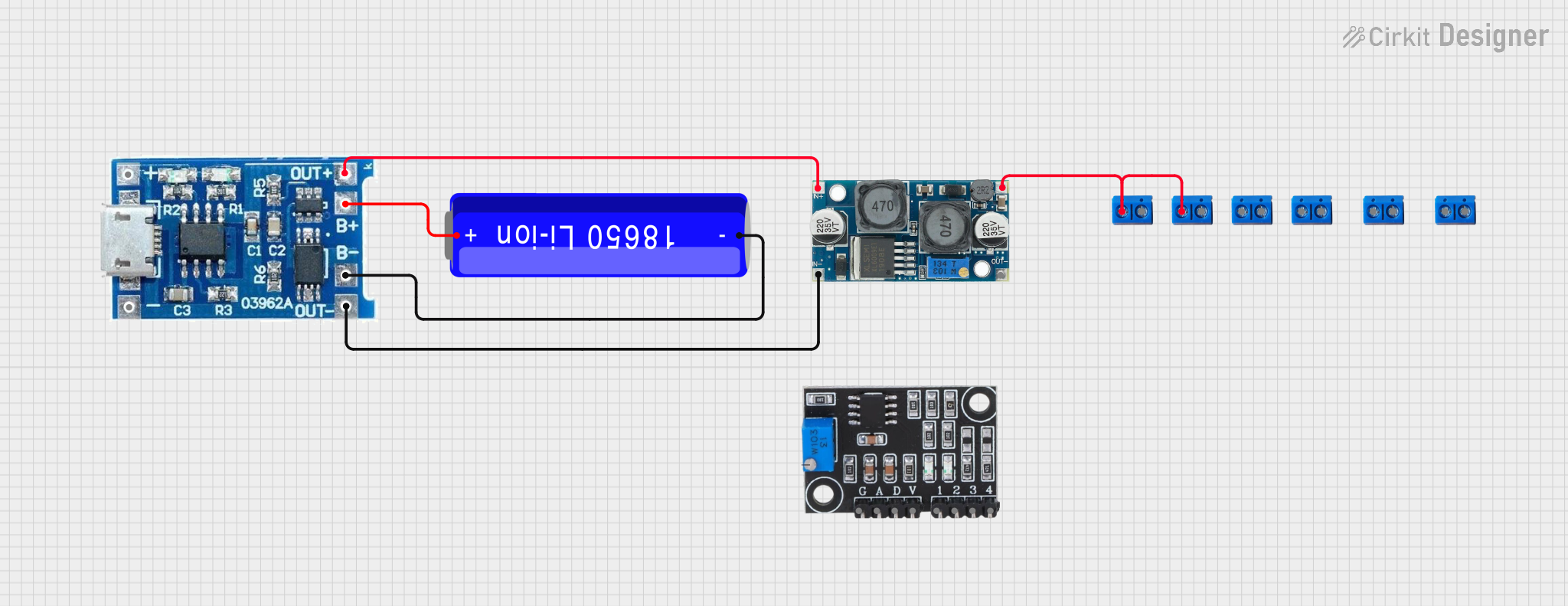
 Open Project in Cirkit Designer
Open Project in Cirkit Designer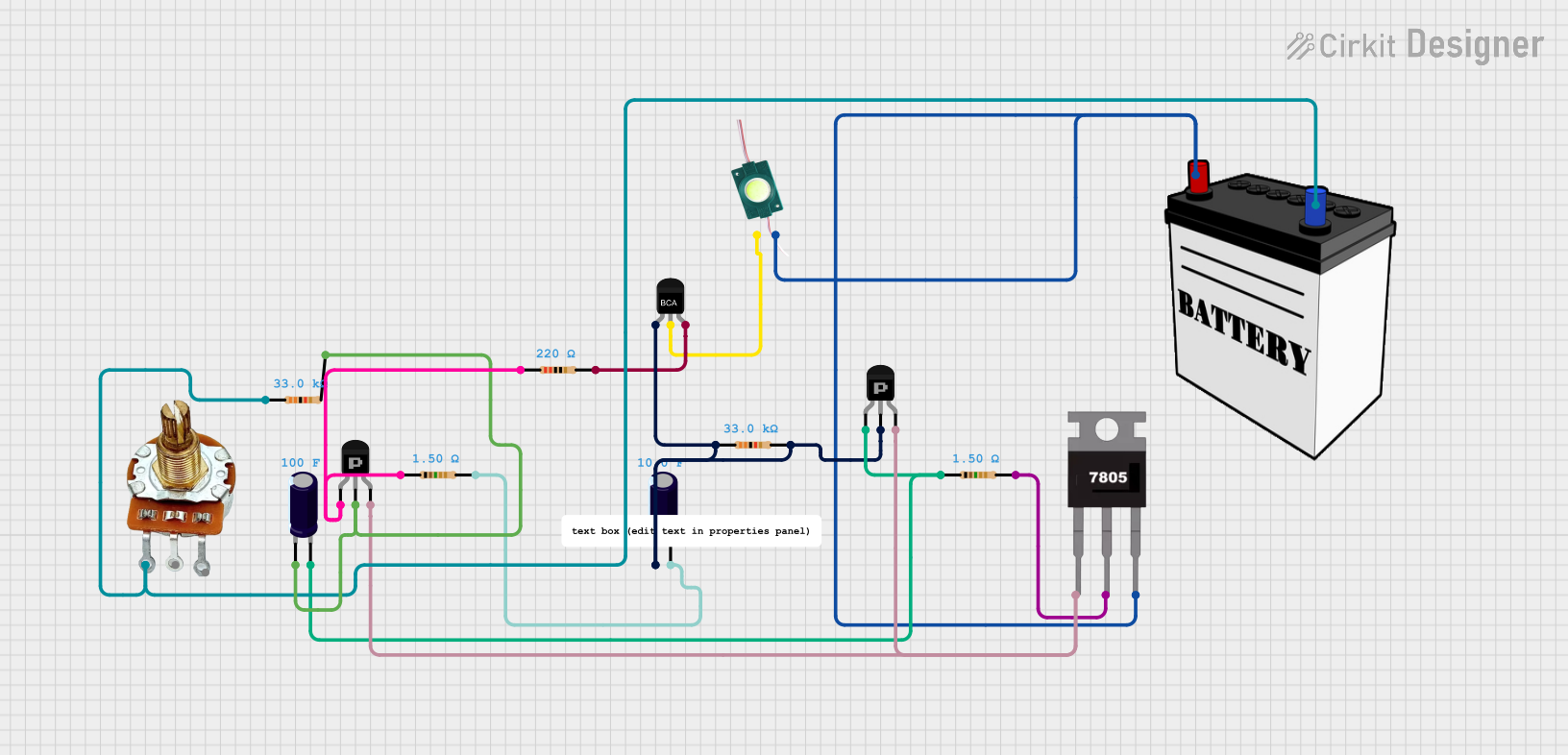
 Open Project in Cirkit Designer
Open Project in Cirkit DesignerExplore Projects Built with MH-MINI-360 VoltReg

 Open Project in Cirkit Designer
Open Project in Cirkit Designer
 Open Project in Cirkit Designer
Open Project in Cirkit Designer
 Open Project in Cirkit Designer
Open Project in Cirkit Designer
 Open Project in Cirkit Designer
Open Project in Cirkit DesignerCommon Applications and Use Cases
- Powering microcontrollers (e.g., Arduino, ESP32, Raspberry Pi Pico)
- Battery-powered devices
- LED drivers
- Robotics and IoT projects
- General-purpose voltage regulation in low-power circuits
Technical Specifications
The MH-MINI-360 VoltReg is a buck converter that steps down a higher input voltage to a lower, stable output voltage. Below are its key technical details:
| Parameter | Value |
|---|---|
| Input Voltage Range | 4.75V to 23V |
| Output Voltage Range | 1.0V to 17V (adjustable) |
| Maximum Output Current | 3A (with proper heat dissipation) |
| Efficiency | Up to 96% |
| Switching Frequency | 340 kHz |
| Dimensions | 17 mm x 11 mm x 3.8 mm |
Pin Configuration and Descriptions
The MH-MINI-360 has four pins for easy integration into circuits. Below is the pinout:
| Pin Name | Description |
|---|---|
| VIN | Input voltage (4.75V to 23V) |
| VOUT | Regulated output voltage (1.0V to 17V, adjustable) |
| GND | Ground connection |
| ADJ | Voltage adjustment pin (used with a potentiometer) |
Usage Instructions
How to Use the MH-MINI-360 in a Circuit
Connect the Input Voltage (VIN):
- Supply a DC voltage between 4.75V and 23V to the VIN pin.
- Ensure the input voltage is higher than the desired output voltage.
Connect the Ground (GND):
- Connect the GND pin to the ground of your circuit.
Set the Output Voltage (VOUT):
- Use the onboard potentiometer to adjust the output voltage.
- Turn the potentiometer clockwise to increase the output voltage and counterclockwise to decrease it.
- Use a multimeter to measure the output voltage while adjusting.
Connect the Load:
- Attach the load to the VOUT pin and GND pin.
- Ensure the load does not exceed the maximum current rating of 3A.
Important Considerations and Best Practices
- Heat Dissipation: If the load current exceeds 1.5A, consider adding a heatsink to prevent overheating.
- Input Voltage Margin: Ensure the input voltage is at least 1.5V higher than the desired output voltage for proper regulation.
- Capacitors: Add input and output capacitors (e.g., 10 µF) close to the regulator to improve stability and reduce noise.
- Polarity Protection: Use a diode at the input to protect the regulator from reverse polarity connections.
Example: Using MH-MINI-360 with Arduino UNO
The MH-MINI-360 can be used to power an Arduino UNO by stepping down a 12V input to 5V. Below is an example circuit and code:
Circuit Connections
- Connect a 12V DC power source to the VIN pin.
- Connect the GND pin to the ground of the power source and Arduino.
- Adjust the potentiometer to set the output voltage to 5V.
- Connect the VOUT pin to the Arduino's 5V pin.
Arduino Code Example
// Example code to blink an LED using Arduino UNO powered by MH-MINI-360
// Ensure the MH-MINI-360 is set to output 5V before connecting to Arduino.
const int ledPin = 13; // Built-in LED pin on Arduino UNO
void setup() {
pinMode(ledPin, OUTPUT); // Set LED pin as output
}
void loop() {
digitalWrite(ledPin, HIGH); // Turn the LED on
delay(1000); // Wait for 1 second
digitalWrite(ledPin, LOW); // Turn the LED off
delay(1000); // Wait for 1 second
}
Troubleshooting and FAQs
Common Issues and Solutions
Output Voltage Not Stable:
- Check the input voltage to ensure it is within the specified range.
- Add input and output capacitors to improve stability.
Regulator Overheating:
- Ensure the load current does not exceed 3A.
- Add a heatsink or improve ventilation around the regulator.
No Output Voltage:
- Verify all connections, especially VIN and GND.
- Check the potentiometer setting and adjust as needed.
- Ensure the input voltage is at least 1.5V higher than the desired output voltage.
Load Not Powering On:
- Measure the output voltage with a multimeter to confirm proper regulation.
- Ensure the load's power requirements are within the regulator's capacity.
FAQs
Q: Can the MH-MINI-360 be used with AC input?
A: No, the MH-MINI-360 requires a DC input voltage. Use a rectifier and filter circuit to convert AC to DC before connecting.
Q: How do I adjust the output voltage precisely?
A: Use a multimeter to measure the output voltage while turning the potentiometer slowly. Fine-tune until the desired voltage is achieved.
Q: Is the MH-MINI-360 suitable for powering sensitive devices?
A: Yes, but add input and output capacitors to reduce noise and improve stability for sensitive devices.
Q: Can I use the MH-MINI-360 to charge batteries?
A: It is not recommended for direct battery charging unless additional circuitry is used to manage charging profiles.
By following this documentation, you can effectively integrate the MH-MINI-360 VoltReg into your projects and ensure reliable performance.